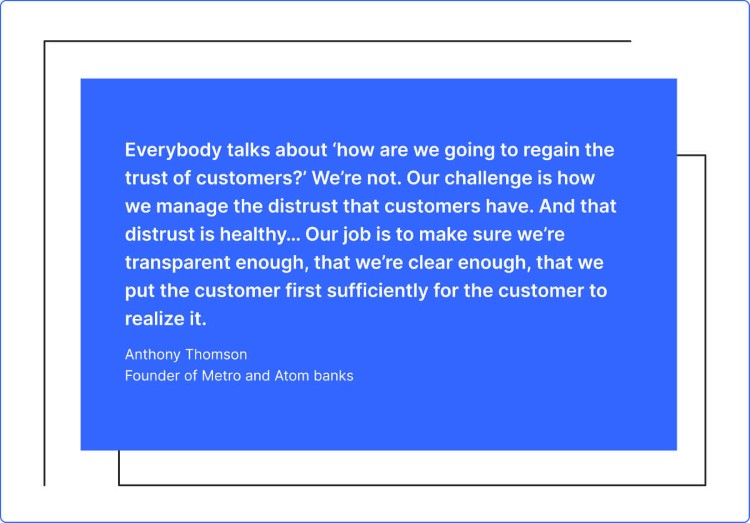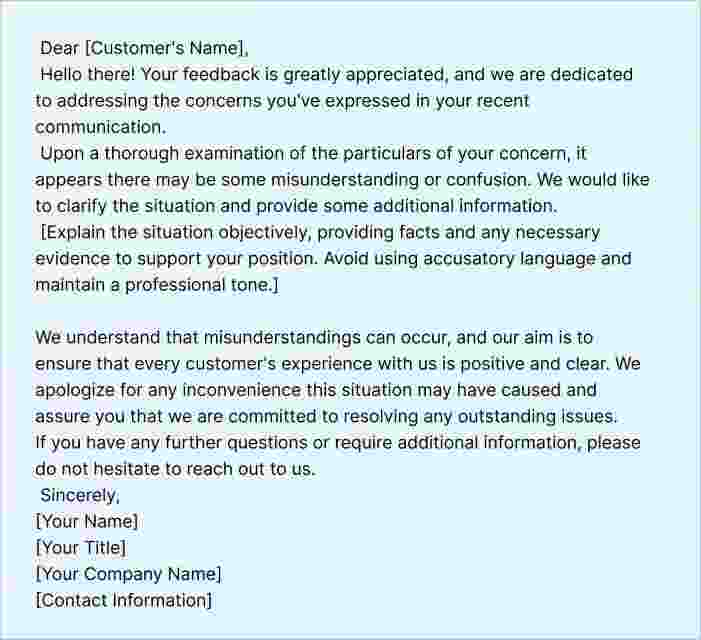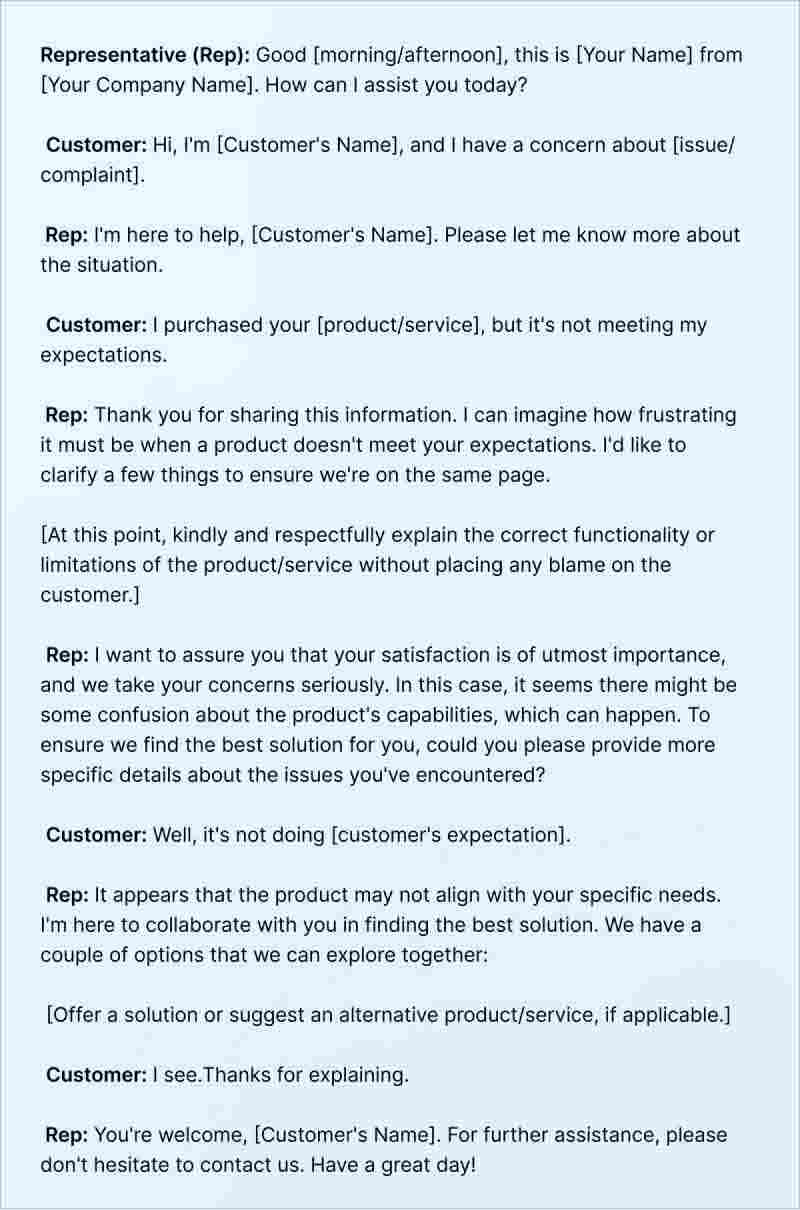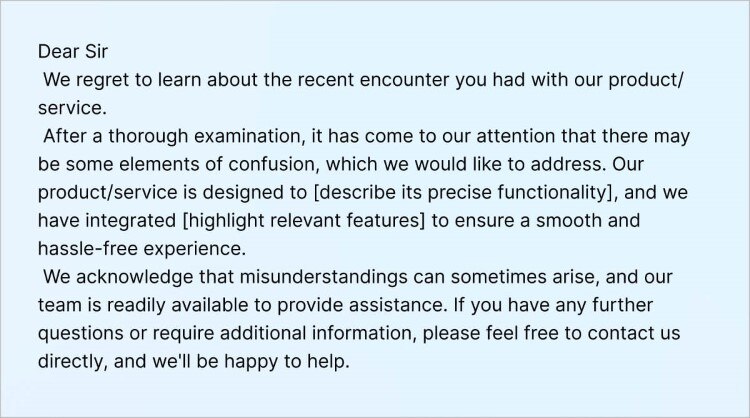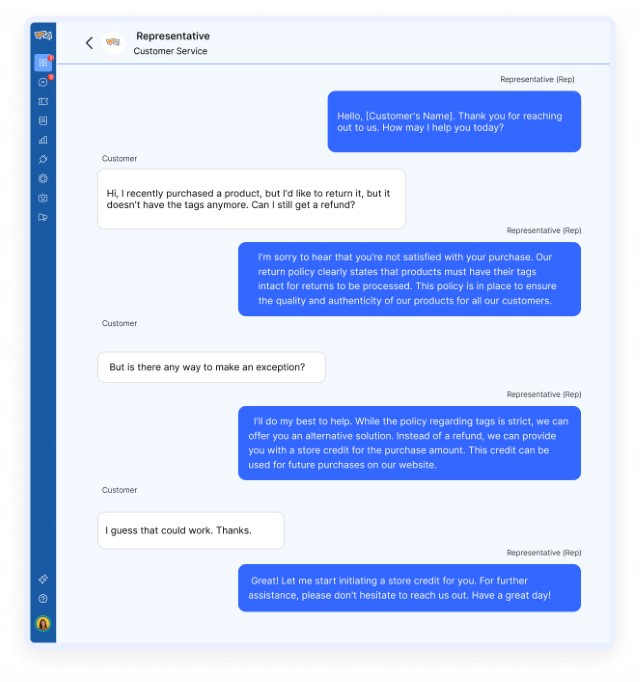Is the customer always right? Not necessarily.
Entrepreneurs and business owners understand that there are occasions when a customer’s viewpoint, either about their company or product, or their behavior towards them and their team, is entirely inaccurate. Although instinct might push you to react defensively, there are instances when it’s necessary to set aside your ego and skillfully collaborate with the customer to shift their perception or guide them to an alternative service provider.
Every seasoned business professional will admit that handling challenging customers is not an enjoyable task. Regardless of how impeccable your customer service abilities may be, encountering an unhappy customer is an inevitable aspect of the fascinating realm of customer service.
Perhaps you’ve found yourself faced with a complaint letter or email from a dissatisfied customer who happens to be mistaken. How should you address such a situation? And why is it essential to address it even when the customer is actually wrong?
In this article, we will provide a guide with examples for handling customer complaints in a professional and objective manner, particularly when the customer’s perspective is incorrect. By the end of this piece, you will feel more confident in your capacity to address them while maintaining your dignity and integrity.
Customer Complaints: Understanding the Why Behind It
Before delving into strategies for addressing customer issues, it’s crucial to grasp the underlying reasons behind their grievances. It’s essential to keep in mind that customers express their concerns to seek resolution, not to disparage your business. Common reasons for customer complaints include the following:
- The product or service fell short of their expectations, resulting in a perceived lack of value for their expenditure.
- An unfavorable encounter with a company representative left the customer dissatisfied.
- The customer perceives a sense of deception, believing that they have been misled.
Customer complaints often indicate a desire for getting compensation from the company. While you may be able to address their concerns directly in some instances, there will be occasions when it becomes necessary to escalate the matter to a higher authority for resolution.
How to Respond to a Complaint When the Customer is Wrong: 7 Ways
When interacting with customers, maintaining politeness and professionalism is very important. However, there may be instances when customers put you in a challenging position. In this discussion, we will explore seven effective approaches on how you can craft your negative feedback response for managing a situation where the customer is at fault.
As a business owner, it’s probable that you will encounter such customers on occasion. Although being the subject of someone’s anger is never a pleasant experience, there are several strategies you can employ to defuse the situation and, ideally, leave the customer satisfied. Let’s discuss!
1. Take a Moment to Actively Listen
Begin by attentively hearing out the customer. Allowing them to express their grievances is crucial, even if you hold differing views. This can be particularly challenging when dealing with a discourteous customer, as maintaining composure and letting them complete their dialogue can be demanding. It’s vital to set aside your ego and refrain from justifying yourself. Dedicate the necessary time to comprehend their perspective and the reasons behind their complaints.
When addressing a customer who is at fault, it’s crucial to maintain a composed and collected demeanor. Despite the challenges, it’s important to bear in mind that the customer might not be thinking rationally and could already be upset.
Here are some suggestions on how to respond to a complaint when the customer is wrong:
- Seek feedback to uncover the underlying reasons for their distress.
- Extend an apology for any factors that may have led to their frustration or inconvenience.
- Demonstrate empathy and a genuine understanding of their perspective.
- Take responsibility and offer to rectify the situation.
- Propose a solution or outline your forthcoming actions.
- Express gratitude for the customer’s patience and understanding.
2. Provide a Calm Explanation of the Situation
If the customer is at fault, it’s advisable to calmly clarify the situation to them. In most cases, about 99% of the time, they will comprehend and offer an apology. However, in the event that they do not, it’s essential to stay composed and have an alternative plan in place. When addressing a customer who is at fault, it’s crucial to avoid taking the situation personally.
Here are some tips you can employ in such instances:
- Actively listen to their grievances and strive to grasp their perspective.
- Extend an apology for any inconvenience they may have encountered.
- Present a resolution to address the issue.
- Express gratitude for their patronage and for raising the concern.
- Conduct a follow-up after resolving the matter to ensure their satisfaction.
- Provide your employees with training on handling similar situations.
- Utilize the incident as a chance to enhance your business practices.
3. Take a Step Back and Assess the Circumstances
In the event that a customer becomes disruptive or displays violent behavior, it’s essential to take a step back. Maintaining a calm environment even if you know that the customer is wrong will enable you to handle the situation more efficiently. As a customer service representative, it’s crucial to prioritize the customer’s needs.
Here are some actions to consider in such cases:
- Pay close attention to the customer’s words, actively listening without just waiting for your turn to speak.
- Exhibit empathy toward the customer, acknowledging their distress even if their reason may not be valid.
- Refrain from taking the matter personally; our focus is on addressing the customer’s concerns, not ourselves.
- Maintain your composure, as responding with anger will only worsen the situation.
- Step back and assess the situation from a more objective perspective.
4. Notify Management about the Incident
If the situation becomes overly challenging to manage, it’s essential to elevate it to the attention of management. The objective is to gain a clearer understanding of the circumstances and, ideally, find a more effective means of resolution. Even if you’re not at fault, it can be disturbing when a customer directs their anger toward you.
Here are some approaches you can follow for managing an irate customer:
- First, find out the root cause of the customer’s frustration. You may find out the easiest way to deal with the situation.
- Apologize, even if it’s not your fault. This gesture demonstrates your willingness to assist, which the customer will value.
- Maintain a composed and patient demeanor, as losing your temper will only make the situation worse.
- Effortfully seek potential solutions. If there’s no remedy, express your regrets but explain the limitations.
- Ensure clear communication and follow-up.
- Conduct an internal investigation as necessary.
5. Collect and Record Relevant Information
In situations where things do not go as planned, it is crucial to record the details of the occurrence. This documentation serves the purpose of preserving the memory of the event, understanding how it unfolded, and also providing substantiating evidence if the need arises. Even though the customer is wrong, he always holds a significant position. Therefore, it is essential for a business owner to be adept at managing the irate ones.
Here you can explore these approaches:
- Express gratitude by saying “thank you” for choosing to do business with you. Even when a customer is dissatisfied with a product or service, it’s important to convey your appreciation for their patronage.
- Inquire about any concerns they may have. Listening to your customers’ issues and making an effort to resolve them will be greatly appreciated.
- Clarify the reasons for the inconvenience. Inform the customer that you are committed to enhancing the situation if they are not content with the product or service.
6. Reassess the Situation
Evaluating the situation is crucial if there is no improvement. This will allow you to implement necessary changes and ensure customer satisfaction. If all other efforts prove unsuccessful, a reassessment of the situation is imperative to determine the next steps. Gaining insights from your mistakes will facilitate your progress.
Here’s how you can start!
- Acquire all available details, encompassing customer grievances, interactions, and any corroborating evidence.
- Verify that your company’s policies and procedures adhere to industry standards and regulations while maintaining fairness toward the customer.
- Even in cases where the customer may be incorrect, make an effort to comprehend their perspective and the underlying reasons for their sentiments.
- Identify any shortcomings in your products or services that might have contributed to the customer’s discontent.
- If your evaluation reveals areas for improvement, make necessary adjustments to enhance customer satisfaction.
7. Present a Resolution
Apologizing for an unsatisfactory customer experience is not enough; you should also provide an explanation of how you intend to rectify the issue. A comprehensive response to a customer complaint includes outlining the next steps to be taken.
You might want to contemplate extending an incentive to the customer, such as a coupon or gift certificate, as a way to entice them to give your business another try. This provides an opportunity to regain the customer’s trust by offering an improved experience.
Here’s some tips for you!
- Suggest a resolution that adheres to your company’s established policies and procedures. It’s crucial to maintain fairness in this resolution, even if the customer’s complaint doesn’t have a valid basis.
- Express gratitude to the customer for raising the issue, underscoring your dedication to enhancing the overall customer experience.
- If the customer remains unsatisfied with the initial resolution, contemplate providing alternative options, such as special discounts, gift cards, or other arrangements, which may serve to satisfy him.
- Once the matter has been resolved, conduct a follow-up to verify the customer’s contentment and collect feedback regarding his experience.
The Art of Responding to Customer Complaints: Proven Tips
” Dear Sir, you are wrong this time!”
It’s not a common practice for customer service representatives to adopt this approach, as it’s generally discouraged. So, how would you handle a customer you know is wrong? What should a customer service representative do in such cases? If customers are like royalty in business, and monarchies don’t operate on fairness, how should customer support agents handle situations where the “king” or “queen” is mistaken?
Well, I have some tips for you! Keep reading.
-
Be Calm, even in Situations Beyond Your Control
It would be unrealistic to assume that every complaint coming from customers is valid. Occasionally, customers make errors, confuse different companies, or misunderstand situations. While it can be tempting to immediately point out the customer’s mistake when they leave a negative review, it’s essential to remain composed and avoid giving in to that temptation.
You should still go through the above-mentioned steps to diffuse such incidents and demonstrate empathy. Don’t know what to say, how to say? You can take a look at these empathy statements to take your customer service to a new height.
After the customer has calmed down, you can gently clarify where the confusion occurred and provide a sincere explanation. Once the customer grasps the situation, you can politely request that they consider removing the negative review, unless they voluntarily offer to do so. It’s crucial to maintain a positive outlook during such interactions, as a composed and understanding approach can be highly effective in resolving customer complaints.
-
Refrain from Shifting Responsibility Elsewhere
Shift away from the practice of assigning blame or passing responsibility to others, and instead, assume ownership for solving the issue personally. It’s crucial to recognize that, in the end, customers are primarily focused on discovering solutions rather than placing blame. Cultivate the skill of effectively handling criticism, even when it seems misplaced.
-
Empathize with the Customer’s Perspective
Adding a touch of empathy can significantly enhance the resolution of customer complaints. Consider that you, just like your customers, are often on the receiving end of service, so step into their perspective when addressing their concerns. Reflect on how you’d like the problem to be resolved if you were in their position. Think about the factors that would encourage you to do business with your company again.
Deliver an equitable and constructive experience to guide the customer through challenging circumstances. Prioritize their feelings and requirements to the best of your ability, while staying aligned with your customer service policies.
-
Request the Customer’s Consent
Rather than hastily presenting a solution, request the customer’s permission to address the issue. For example, you can say, “I realize this has been quite inconvenient for you. May I suggest a few options I’ve considered to rectify the situation?” While it may seem evident that they want the issue resolved, asking for permission in a tense interaction allows the customer to actively participate in finding the optimal solution.
This approach aligns you with the customer, working together to tackle the problem, instead of setting up a customer vs. service representative scenario.
-
Ask Questions
It’s advisable to pose inquiries that delve further into the problem. Customers often use written complaints as an outlet to express their frustrations, yet they might not fully reveal the underlying issue in their initial communication. Therefore, it’s important to seek additional information from them. Here are some recommendations for when you’re asking follow-up questions:
- Did our representative provide any assurances or promises during the sale? If so, what specific commitments were made?
- Were there any inquiries you had that our representative didn’t address?
- Have any concerns or questions arisen since the sale was finalized?
- Could you pinpoint when the issue began after the sale?
- How can we improve the situation? (In cases where the customer hasn’t requested compensation or presented other specific requests.)
-
Cordial Ending
Initially, express gratitude to the customer for alerting you to the matter. Follow this with a sincere apology, reiterating your regret for the issue and any associated inconvenience.
Additionally, underscore the significance of their patronage. This approach conveys their importance and may lead to their acknowledgment of the situation. However, don’t expect them to say sorry to you. Your ultimate aim is to make them happy and satisfied.
Responding Professionally to Inaccurate Customer Complaints: Examples
Negative feedback can be quite personal, particularly for business owners who typically invest significant energy in refining their products or services.
The most effective approach to handling customer complaints is to recognize that both you and the customer are working together toward the same goal, even if the customer may not be aware of it yet. By infusing a touch of personalization, you’re well on your way to enhancing overall customer satisfaction.
Let me show you some examples here.
-
Sample email Response to a Customer Complaint
-
Sample Phone Conversation for Responding to a Customer Complaint
Handling a phone conversation with a customer who is mistaken or has a misunderstanding is crucial for maintaining good relations. Here’s a sample template for responding to a customer complaint when the customer is wrong:
-
Sample Response for a Negative Social Media Review
Responding to a negative social media review when the customer is mistaken is a delicate task. It’s important to maintain a professional and empathetic tone. Here’s a sample response:
-
Sample Response to a Customer Complaint over Live Chat
Handling Complaints When Fault Lies on the Customer’s Side
Dealing with customer complaints, especially when the fault lies with the customer, may not be the most enjoyable aspect of the job, but it’s an integral part of it. Devoting time to craft a strategy for addressing these complaints and approaching each situation with sensitivity demonstrates to your customers that you truly appreciate their patronage. This, in turn, significantly reduces the likelihood of them seeking alternatives. As you prepare to respond to reviews, tweets, or engage in conversations with individuals sharing feedback about your business, remember to uphold these best practices.
We have also written a blog for you on bad review response examples. Feel free to give it a read to gain insights on how to effectively craft your replies.

